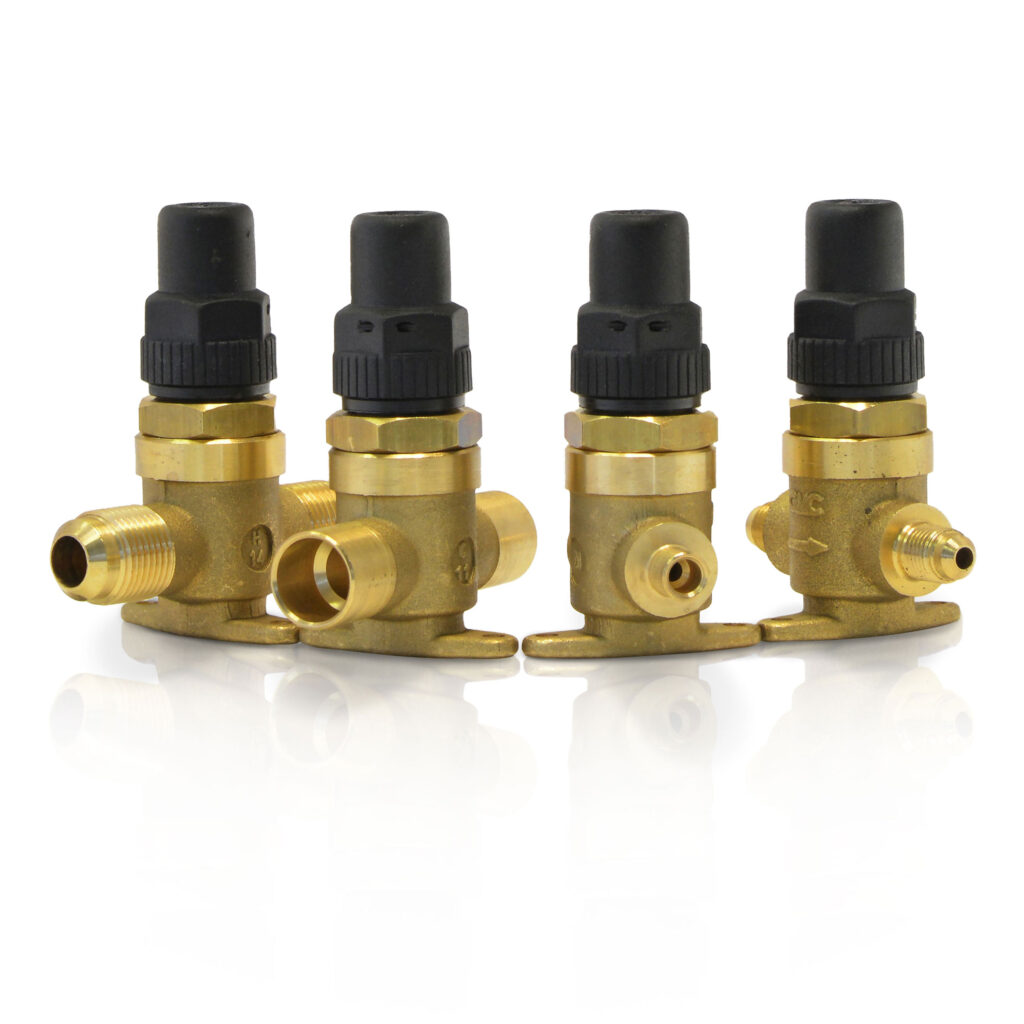
The capped valves are classified as “Pressure accessories” in the sense of the PED Directive 2014/68/EU, Article 2, paragraph 5 and are subject to Article 4, paragraph 1, letter (c), of the same Directive.
All the product range is suitable for use with fluids proper to Group 1 and 2, as defined in Article 13, paragraph 1, letter (a) and letter (b), of PED Directive 2014/68/EU with reference to the Regulation (EC) n. 1272/2008, according to safety classification A1, A2L in Annex E of the standard EN 378-1:2016. Examples of refrigerants fluids are:
– HFC R32, R134a, R404A, R407C, R410A, R507;
– HFO R1234yf, R1234ze and blends HFC/HFO R448A, R449A, R450A, R452A, R452B, R445A, R454B, R454C, R513A.
It is also possible to use these PLUS series products with HC hydrocarbon refrigerants such as:
– R290, R600, R600a, R1270;
proper to Group 1, as defined by Article 13, paragraph 1, letter (a) of PED Directive 2014/68/EU, with reference to Regulation (EC) n. 1272/2008 and according to safety classification A3, in Annex E of the EN 378-1:2016 standard. The function of the capped valves is to intercept the passage of the fluid to isolate a portion of the system and allow maintenance operations.
The valve body is made of hot forged brass EN 12420 – CW617N and the spindle is made of galvanized steel. A package consisting of chloroprene rubber seals and aramid fibers gaskets, approved by DIN-DVGW in accordance with DIN 3535, part 6 FA, guarantees an excellent seal to the outside in an area not directly in contact with the fluid, between the spindle and the gland; instead, the seal between the spindle group and the body, in direct contact with the fluid, is ensured by an HNBR.
Read carefully the installation instructions included in the box. For the CSV..S types is necessary to disassemble the valve, acting on the indicated hexagon, before brazing the body to the system. The brazing shall be done with a low melting point alloy. During this process do not point the flame directly towards the body in order to prevent leaving combustion residues on the sealing seats.